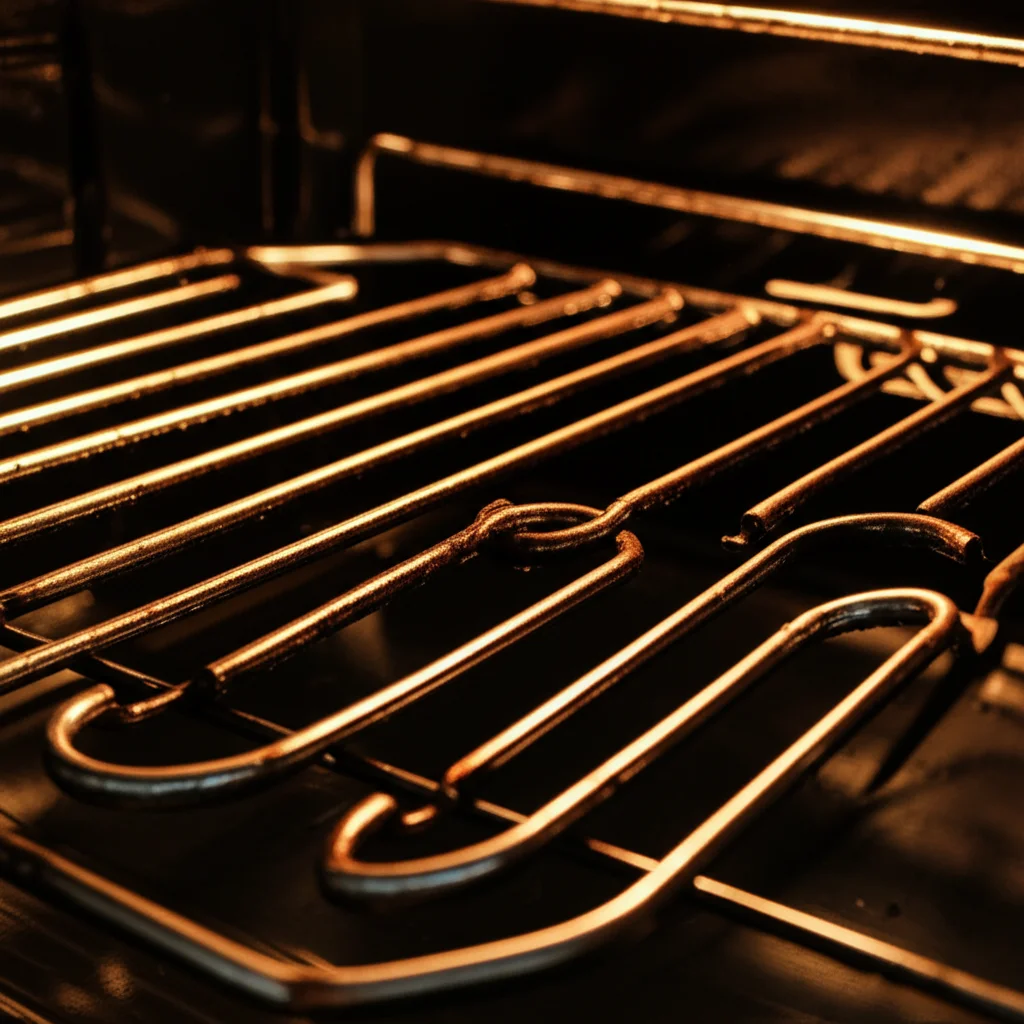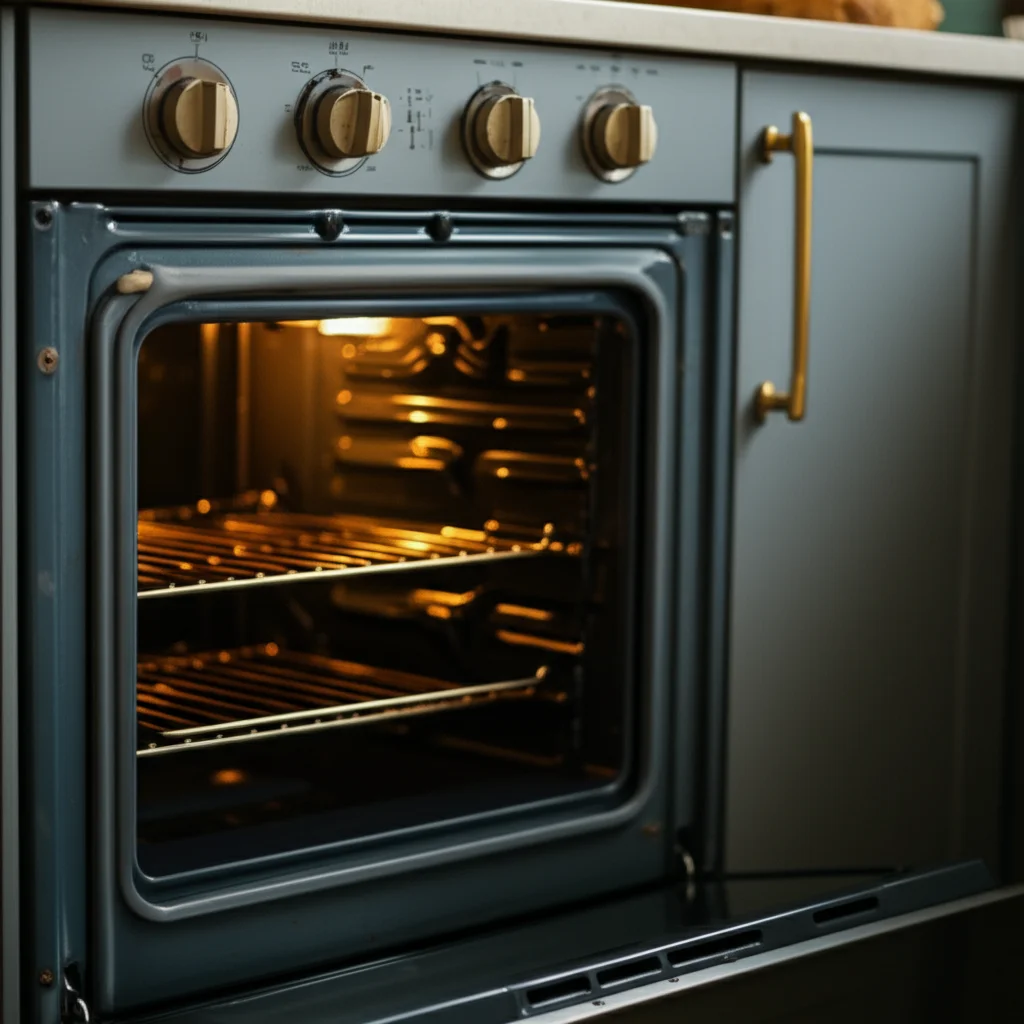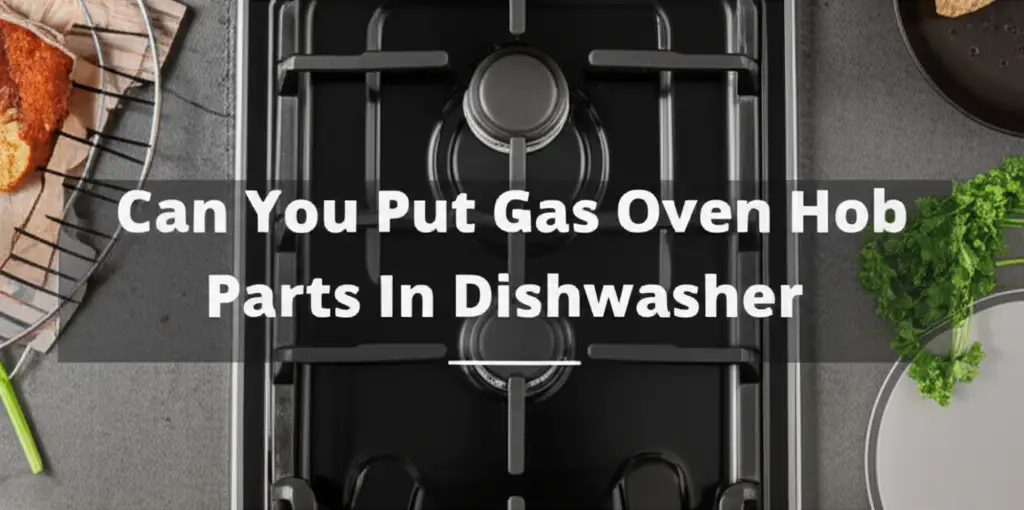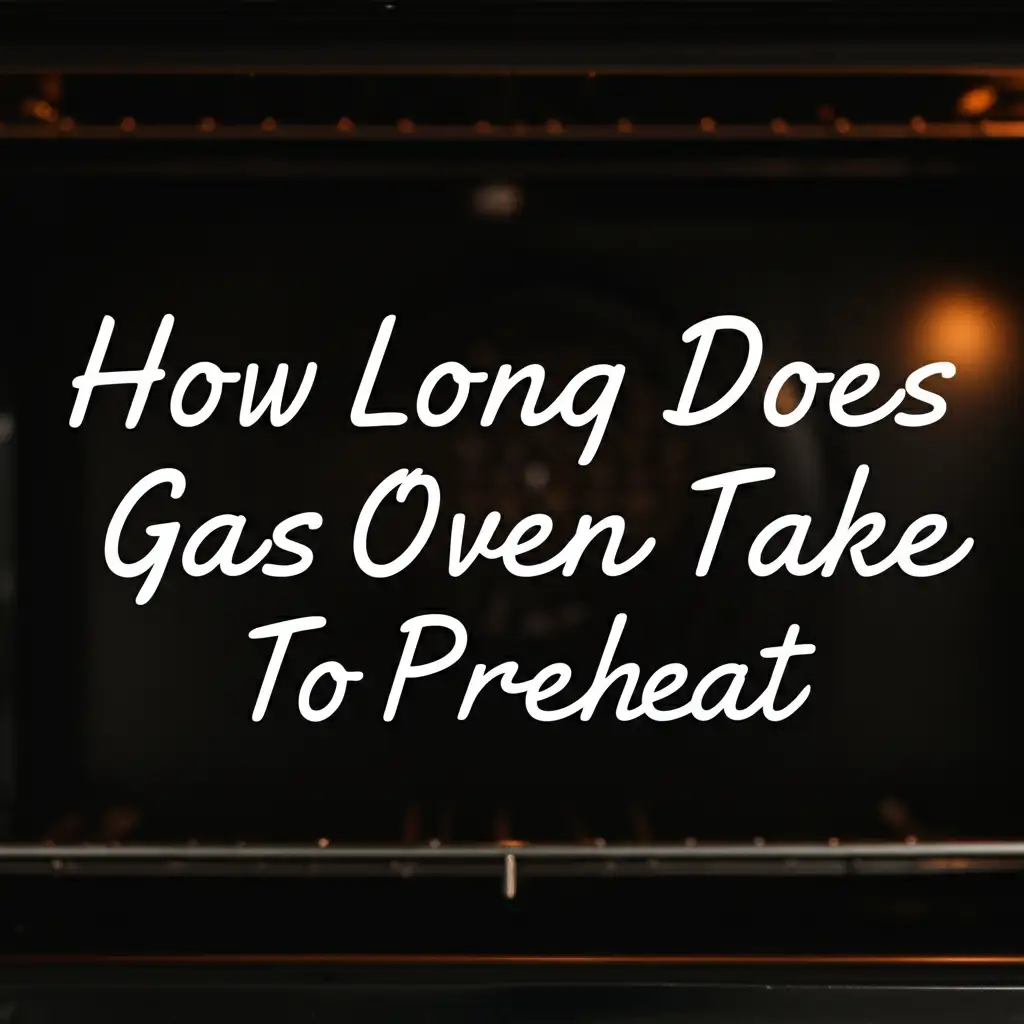· Todd Martin · Kitchen Guide · 20 min read
How To Bake In Wolf Oven
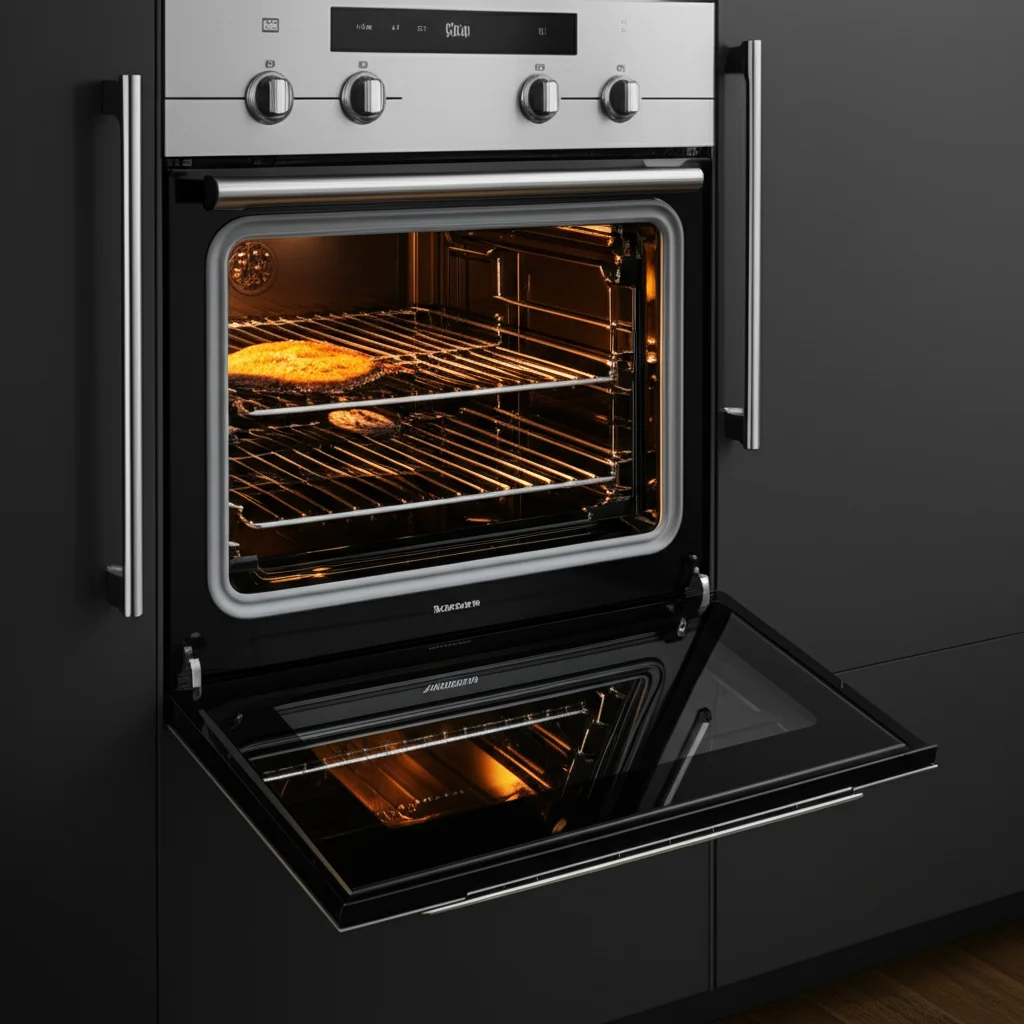
Unleash Culinary Excellence: How to Bake in Your Wolf Oven
Wolf ovens are a centerpiece in many kitchens, known for their powerful performance and precise control. Learning how to bake in a Wolf oven transforms your cooking, helping you achieve consistently perfect results. These appliances bring professional-grade quality right into your home. You can make everything from delicate pastries to hearty roasts with confidence. This guide will walk you through essential techniques and tips. We will cover understanding your oven’s features, preparing for baking, and mastering different cooking modes. By the end, you will feel ready to tackle any baking project with your Wolf oven.
Takeaway
- Understand your Wolf oven’s specific features, like dual convection or Gourmet mode.
- Always preheat your Wolf oven fully to ensure even baking.
- Use the correct rack position for optimal heat distribution for your dish.
- Clean and maintain your oven regularly for best performance.
- Experiment with different modes to find what works best for your recipes.
Clear and Concise Answer
To bake in a Wolf oven, preheat it thoroughly to the specified temperature, allowing ample time for stabilization. Select the appropriate baking mode and rack position for your specific dish. Use the precise temperature controls to ensure even heat distribution for consistently excellent results.
Understanding Your Wolf Oven’s Unique Baking Features
Your Wolf oven is not just any appliance; it comes with advanced features designed to elevate your baking. These unique functionalities make a real difference in how your food turns out. Knowing what your oven can do helps you use it to its full potential. I find that recognizing these features makes baking much more intuitive.
Many Wolf ovens have a dual convection system. This means two fans work together to circulate heat evenly. Hot air reaches every part of the oven cavity. This prevents hot spots and cold spots, which can ruin a delicate soufflé or an even-browned pie crust. Convection can significantly reduce baking times.
Another common feature is the various preset cooking modes. Wolf ovens often include modes like “Bake,” “Roast,” “Convection Bake,” and sometimes “Gourmet.” Each mode is optimized for specific types of food. For example, “Bake” uses traditional radiant heat, while “Convection Bake” adds fan-forced air for quicker, more even cooking. I always check the manual to understand what each mode does.
The oven’s temperature probe is also a valuable tool. This probe allows you to monitor the internal temperature of meats or bread without opening the oven door. This ensures your food cooks to the exact desired doneness. It helps prevent undercooking or overcooking, especially for larger items. I rely on this feature for perfect roasts and large loaves of bread.
Furthermore, some Wolf models offer a “Proof” mode for bread. This setting provides a low, consistent temperature and humidity level. It creates the ideal environment for dough to rise properly. Using this mode helps achieve light and airy baked goods. I have found it invaluable for my homemade bread.
The oven racks are designed for versatility. They glide smoothly, making it easy to check on your food. Some racks are full-extension, allowing you to pull them out completely without tipping. This makes placing and removing heavy items safer and simpler. I appreciate how stable these racks feel.
Essential Pre-Baking Steps for Your Wolf Oven
Before you start any baking project, a few simple steps ensure your Wolf oven performs at its best. These preparation steps are crucial for achieving consistent and desirable results. I have learned that skipping these can lead to uneven baking. A little planning goes a long way.
First, always ensure your oven is clean. Food debris or spills can burn and cause smoke, affecting the flavor of your baked goods. A clean oven also promotes better heat distribution. If you have just used the self-clean cycle, ensure you wipe away any residue. Learn how to clean the inside oven glass for clear visibility.
Second, proper preheating is non-negotiable for a Wolf oven. These ovens are designed for precision, but they need adequate time to reach and stabilize at the set temperature. Do not just wait for the preheat indicator light to turn off. Allow an additional 10-15 minutes after the light signals readiness. This extra time ensures the oven cavity and racks are fully saturated with heat.
Third, place your oven racks in the correct positions before preheating. Changing rack positions mid-bake lets heat escape, which can affect cooking times and results. The general rule is to use the middle rack for most items like cookies, cakes, and casseroles. For items that need more browning on top, like gratins, use a higher rack. For items that need a crispy bottom, like pizza, a lower rack might be better. I always consult the recipe’s recommendations for rack placement.
Fourth, check your baking tools and ingredients. Use high-quality bakeware that is appropriate for your recipe. Dark pans absorb more heat and can lead to darker crusts. Light-colored pans reflect heat, resulting in lighter crusts. Ensure all ingredients are at the correct temperature, such as room temperature eggs or softened butter, as specified by your recipe. This small detail can significantly impact the final texture of your baked goods.
Finally, familiarize yourself with your oven’s specific controls and settings for the mode you intend to use. Whether it’s “Bake,” “Convection Bake,” or “Gourmet,” knowing how to select and adjust these settings smoothly saves time and reduces stress. I take a moment to confirm the mode before pressing start.
Temperature Control and Calibration: Precision Baking with Wolf
Achieving perfect baking results relies heavily on accurate temperature control. Wolf ovens are known for their precision, but understanding how to manage and verify their temperature is key. I have found that a little attention here makes all the difference for consistent outcomes. Knowing your oven’s true temperature is a game-changer.
Every oven, even a premium Wolf, can have slight temperature variations. These variations can be minor, but for delicate baked goods like soufflés or custards, even a few degrees matter. An oven thermometer is your best friend here. Place a quality oven thermometer inside the oven, preferably near the center. Compare its reading to your oven’s display after it has fully preheated. This tells you if your oven is running hot or cold.
If you find a consistent discrepancy, you may need to adjust your oven’s calibration. Many Wolf ovens allow for user calibration through their control panel. Consult your owner’s manual for specific instructions on how to do this. Typically, it involves entering a service menu and offsetting the temperature. This adjustment ensures the temperature displayed matches the actual temperature inside the oven. I calibrated mine shortly after getting it, and it made my baking much more predictable.
When baking, resist the urge to frequently open the oven door. Each time you open the door, hot air escapes. This causes a significant temperature drop. The oven then has to work harder to recover the heat, which can lead to uneven baking and longer cooking times. Use the oven light and the large glass window to check on your progress.
For recipes that require specific temperatures for different stages, your Wolf oven’s precise controls are a huge advantage. You can easily adjust the temperature up or down. This is especially useful for items like cheesecakes, which might start at a high temperature and finish at a lower one. The quick response of a Wolf oven allows for these precise changes.
Understanding how your oven maintains temperature is also important. Wolf ovens use advanced sensors and heating elements to keep the temperature stable. However, the density and type of food you are baking can affect this. For example, filling the oven completely with cold dough will cause a temporary temperature dip. The oven will recover, but it is good to be aware of such factors. If you need to understand how to clean an electric oven, it contributes to overall temperature stability. Discover how to clean an electric oven for maintaining peak performance.
Mastering Convection Baking in Your Wolf Oven
Convection baking is one of the most powerful features of your Wolf oven, offering speed and consistency that traditional baking cannot match. Once you understand how to use it, you will wonder how you ever baked without it. I embraced convection years ago, and my baking has never been the same. It truly changes the game for many recipes.
A Wolf oven’s dual convection system works by circulating hot air rapidly and evenly throughout the oven cavity. This means heat reaches every surface of your food. The benefits are significant: faster cooking times, more even browning, and improved crispiness. This is especially great for roasted vegetables, poultry, and multiple trays of cookies.
When using convection, the general rule is to reduce the recipe’s temperature by about 25 degrees Fahrenheit (around 15 degrees Celsius). You should also check your food earlier than the recipe suggests, as cooking times can be reduced by 15-25%. For example, if a recipe calls for 350°F for 30 minutes in a conventional oven, try 325°F for 20-25 minutes with convection. I always set a timer for the lower end of the range.
Convection is excellent for baking multiple items at once. Because the heat is circulated so evenly, you can often place several trays of cookies or pastries on different racks without needing to rotate them. This saves time and ensures each batch cooks uniformly. I love being able to bake two sheets of cookies at the same time, knowing they will both come out perfectly golden.
However, not all foods benefit from convection. Delicate items that need a slow, gentle rise, like soufflés, custards, or some quick breads, might do better with the traditional “Bake” mode. The forced air can sometimes dry out these items or prevent them from rising properly. For example, if you are making a delicate cheesecake, the “Bake” setting might be preferable. Understanding how to clean your convection oven also helps maintain its efficiency.
Your Wolf oven likely has a specific “Convection Bake” mode. Select this mode on your control panel. Some models might even have an “Auto Convection” feature, which automatically adjusts the temperature for you when you select a standard bake recipe. Always refer to your specific model’s manual to understand its unique convection settings. Experimentation is key to mastering this powerful tool.
Baking Different Food Types in a Wolf Oven
The versatility of your Wolf oven allows you to bake a wide array of foods, each requiring slightly different approaches. Understanding these nuances helps you achieve optimal results every time. I enjoy adapting my baking techniques for different recipes. It feels like unlocking new levels of culinary skill.
Baking Breads and Pizzas
For crusty breads and pizzas, a high initial heat is often desirable. Many Wolf ovens can reach very high temperatures, which is excellent for creating a crisp crust. Use a pizza stone or baking steel, preheating it with the oven for at least 30-45 minutes. This creates a hot surface for the dough. For bread, consider using a lower rack for better bottom crust development. Some Wolf ovens have a “Proof” mode which is perfect for bread dough. If your Wolf oven is gas, ensure you understand its features. Check out how to clean a gas oven inside to keep it ready for baking.
Cakes and Muffins
Cakes and muffins typically bake best in the “Bake” mode, often on the middle rack. This provides gentle, even radiant heat, allowing them to rise properly without drying out. Avoid using convection for delicate cakes, as the fan can sometimes create a crust too quickly or cause uneven rising. Ensure your pan sizes are appropriate and not too crowded. My cakes always come out moist and fluffy with this method.
Cookies and Pastries
For cookies, “Convection Bake” is usually your best friend. The even air circulation ensures uniform browning and crispiness across all cookies, even if you are baking multiple trays. Remember to reduce the temperature by 25°F and check for doneness earlier. For pastries like croissants or puff pastry, convection also helps create a beautifully flaky texture. I can bake four trays of cookies at once using convection, and they all come out perfectly.
Roasts and Casseroles
While primarily a baking guide, it is worth noting that Wolf ovens excel at roasting too. For casseroles, the “Bake” mode generally works well, providing consistent heat for bubbling, cheesy goodness. For roasts, the “Roast” mode or “Convection Roast” combined with the temperature probe ensures perfect internal doneness and a beautiful exterior. Always use the probe for precise control.
No matter what you bake, remember to consider the density and size of the food. Larger or denser items will require longer baking times. Always check for doneness using visual cues or a probe. Your Wolf oven is a powerful tool; experiment with its modes to find what works best for each recipe.
Troubleshooting Common Wolf Oven Baking Issues
Even with a high-end Wolf oven, you might encounter occasional baking challenges. Knowing how to troubleshoot these common issues helps you quickly get back to perfect results. I have run into a few snags myself, and solving them was simpler than I thought. A little detective work usually provides the answer.
Uneven Baking
This is one of the most frustrating problems. If your cakes are browning more on one side or your cookies are crispy on the edges but soft in the middle, uneven heat distribution is likely the cause.
- Check Preheat Time: Did you allow enough time for the oven to fully preheat and stabilize? Wolf ovens need up to 20-30 minutes, sometimes more, to fully saturate with heat.
- Rack Position: Is your food on the correct rack? The middle rack is usually best for most items. Too high or too low can cause uneven browning.
- Overcrowding: Do not overcrowd the oven. Air needs to circulate around your bakeware. Leave at least an inch or two between pans and the oven walls.
- Cleanliness: A dirty oven can affect heat distribution. Grease and burnt-on food absorb heat differently. A regular cleaning regimen, including learning how to deep clean your oven, can make a noticeable difference in performance and even heat distribution.
Food Too Dry or Burnt
If your baked goods are drying out quickly or burning before they are cooked through, the temperature might be too high or the cooking time too long.
- Oven Calibration: As discussed, verify your oven’s temperature with an external oven thermometer. Calibrate if necessary.
- Convection Use: If using convection, ensure you have reduced the temperature (typically 25°F) and the cooking time. Convection cooks faster and dries more.
- Pan Type: Darker pans absorb more heat and can lead to overbrowning. Try a lighter-colored metal pan or reduce the temperature slightly.
Food Not Browning Enough
Conversely, if your food is pale and lacks a golden crust, it might be baking at too low a temperature or for too short a time.
- Oven Calibration: Again, confirm your oven’s temperature. It might be running cold.
- Convection: If applicable, try using convection. The fan-forced air promotes better browning.
- Rack Position: Move the item to a higher rack if it needs more top browning.
- Ingredient Quality: Ensure leavening agents (baking soda, baking powder) are fresh and active.
Smoke or Odors During Baking
This usually indicates a dirty oven. Spills, grease, or food debris from previous cooking sessions are burning off.
- Cleanliness: Regularly clean the interior of your oven. Focus on the bottom and sides. If you have significant spills, learning how to clean the bottom of the oven is important.
- Pre-Cleaning: Always wipe up spills as soon as they cool down.
Always refer to your Wolf oven’s owner’s manual for specific troubleshooting steps and error codes. They provide model-specific advice that can be invaluable.
Advanced Baking Techniques with Your Wolf Oven
Once you master the basics, your Wolf oven’s capabilities allow you to explore more advanced baking techniques. These methods leverage the oven’s precision to achieve professional-level results. I enjoy pushing the boundaries of what my oven can do. It makes baking even more rewarding.
Multi-Rack Baking
Many Wolf ovens boast generous capacities and powerful convection systems, making multi-rack baking highly effective. This is particularly useful for holiday baking or large batches of cookies. With convection, you can often bake two or even three trays of cookies, scones, or pastries at once without rotation.
- Even Spacing: Ensure there is enough space around each pan for air to circulate freely. Do not stack pans directly above each other.
- Convection Mode: Always use “Convection Bake” for multi-rack baking. This ensures even heat distribution across all levels.
- Monitor: Even with convection, keep an eye on items, as those on different racks might finish at slightly different times.
Using the Temperature Probe
Your Wolf oven’s temperature probe is a fantastic tool for achieving precise internal temperatures, especially for large cuts of meat or certain types of bread.
- Proper Placement: Insert the probe into the thickest part of the food, avoiding bones or fat pockets.
- Set Target Temp: Program your oven to alert you when the food reaches the desired internal temperature. The oven may automatically switch to a “Hold” setting or turn off.
- Resting Time: Remember that food continues to cook after being removed from the oven (carryover cooking). Factor this into your target temperature.
”Gourmet” or Pre-Programmed Modes
Some Wolf ovens feature a “Gourmet” mode or other pre-programmed settings. These modes take the guesswork out of complex recipes. They automatically adjust temperature, humidity, and cooking time based on the selected food type.
- Explore Options: Browse the available categories, such as “Bread,” “Dessert,” or “Roast.”
- Follow Prompts: The oven will guide you through steps, such as pan placement or adding water for steam.
- Learning Tool: Use these modes to understand optimal settings for different foods. You can then apply this knowledge to your own recipes.
Understanding Residual Heat
Wolf ovens retain heat very well due to their excellent insulation. This residual heat can continue to cook food even after the oven is turned off or if the door is opened briefly.
- Cooling Down: If a recipe requires rapid cooling or stopping the cooking process, remove the food from the oven immediately.
- Holding Temperature: This heat retention is beneficial if you need to keep food warm for a short period after cooking.
Embracing these advanced techniques allows you to fully harness the power and precision of your Wolf oven. It transforms your kitchen into a professional-grade bakery.
Maintaining Your Wolf Oven for Optimal Baking Performance
Maintaining your Wolf oven is crucial for ensuring its longevity and consistent baking performance. A well-cared-for oven works more efficiently and delivers better results. I believe that proper maintenance is an investment in your culinary success. Keeping your oven clean also reduces the risk of breakdowns.
Regular Cleaning Routine
The most important aspect of oven maintenance is regular cleaning. Spills and grease buildup can affect heat distribution and even create odors that transfer to your food.
- Wipe Up Spills Immediately: Once the oven cools, wipe away any fresh spills with a damp cloth. This prevents them from baking on and becoming harder to remove.
- Deep Cleaning: Depending on usage, deep clean your oven every few months. Many Wolf ovens feature a self-clean cycle. Follow the manual’s instructions for using it safely and effectively. You can learn how to clean an oven after self-clean to remove any ash residue. For baked-on grease, how to clean baked-on grease in oven can be very helpful.
- External Cleaning: Do not forget to clean the exterior surfaces and control panel with a mild cleaner and soft cloth. Avoid abrasive cleaners that can damage the finish.
Inspecting Door Seals and Hinges
The oven door seal (gasket) is vital for retaining heat. A damaged or worn seal allows heat to escape, leading to uneven baking and wasted energy.
- Check for Damage: Regularly inspect the seal for cracks, tears, or hardening. Gently feel around it to ensure it is pliable.
- Clean the Seal: Wipe the seal gently with a damp cloth to remove any crumbs or residue. Avoid harsh chemicals that could degrade the material.
- Hinge Functionality: Ensure the door hinges operate smoothly. If the door feels loose or does not close tightly, it might need adjustment or professional service.
Checking Heating Elements and Lights
While less frequent, it is good to occasionally check the oven’s internal components.
- Heating Elements: Observe the heating elements (if visible) during preheating. They should glow evenly. If parts are not glowing or appear damaged, it could indicate an issue.
- Oven Lights: A working oven light allows you to monitor your food without opening the door. Replace burnt-out bulbs promptly. Consult your manual for the correct bulb type and replacement procedure.
Professional Servicing
Wolf ovens are complex appliances. If you notice persistent issues, strange noises, or error codes that you cannot resolve, it is best to call a certified Wolf service technician. Do not attempt major repairs yourself, as this can void warranties and cause further damage. They have the expertise to diagnose and fix problems correctly.
By implementing these maintenance practices, you extend the life of your Wolf oven. You also ensure it continues to provide the exceptional baking performance you expect from a premium appliance. A clean, well-maintained oven is a happy oven, and it makes for happier bakers.
Frequently Asked Questions About Baking in Wolf Ovens
How long does a Wolf oven take to preheat?
A Wolf oven typically takes longer to preheat than many standard ovens due to its robust insulation and precise heating elements. It usually requires 20-30 minutes to reach the set temperature. For optimal baking, allow an additional 10-15 minutes after the preheat indicator signals readiness. This extra time ensures the oven cavity and racks are fully heat-saturated for even baking results.
What is the best rack position for baking in a Wolf oven?
For most baking, the middle rack is ideal. This position ensures the most even heat distribution from both the top and bottom heating elements. For items needing more browning on top (like gratins), use a higher rack. For items requiring a crispier bottom (like pizza), a lower rack might be beneficial. Always consult your recipe’s recommendations.
Can I use aluminum foil in my Wolf oven?
Yes, you can generally use aluminum foil in a Wolf oven. However, avoid lining the bottom of the oven or the oven racks directly with foil. This can trap heat, affect airflow, and potentially damage the oven’s finish or heating elements. Instead, use foil to cover dishes, make loose tents for roasting, or line baking sheets for easy cleanup.
Why is my Wolf oven baking unevenly?
Uneven baking in a Wolf oven can stem from several factors. Insufficient preheating time is a common culprit; allow extra time for heat stabilization. Overcrowding the oven or incorrect rack placement can also restrict airflow. Finally, a dirty oven with baked-on food debris can create hot and cold spots, affecting heat distribution.
What are the different baking modes in a Wolf oven?
Wolf ovens typically offer several baking modes to optimize results. Common modes include “Bake” (traditional radiant heat), “Convection Bake” (fan-forced heat for faster, even cooking), and sometimes “Roast” or “Gourmet.” Some models also feature a “Proof” mode for bread dough. Each mode is designed for specific food types and desired outcomes.
How do I calibrate my Wolf oven temperature?
If your Wolf oven is consistently running hot or cold, you may need to calibrate its temperature. First, verify the discrepancy with an independent oven thermometer. Consult your Wolf oven’s owner’s manual for specific instructions, as the calibration process varies by model. It usually involves accessing a service menu through the control panel and adjusting the temperature offset.
Conclusion: Master Your Wolf Oven for Superior Baking
Mastering how to bake in your Wolf oven transforms your culinary journey, bringing professional precision to your home kitchen. By understanding its unique features, practicing essential pre-baking steps, and utilizing temperature control, you can achieve consistently perfect results. Remember to harness the power of convection, adapt your techniques for different food types, and confidently troubleshoot any issues that arise. Regular maintenance ensures your Wolf oven performs at its peak for years to come. I encourage you to experiment with your oven’s capabilities. With each bake, you will gain more confidence and skill. Your Wolf oven is a powerful ally; learn to use it well. Enjoy the journey of creating delicious baked goods.


